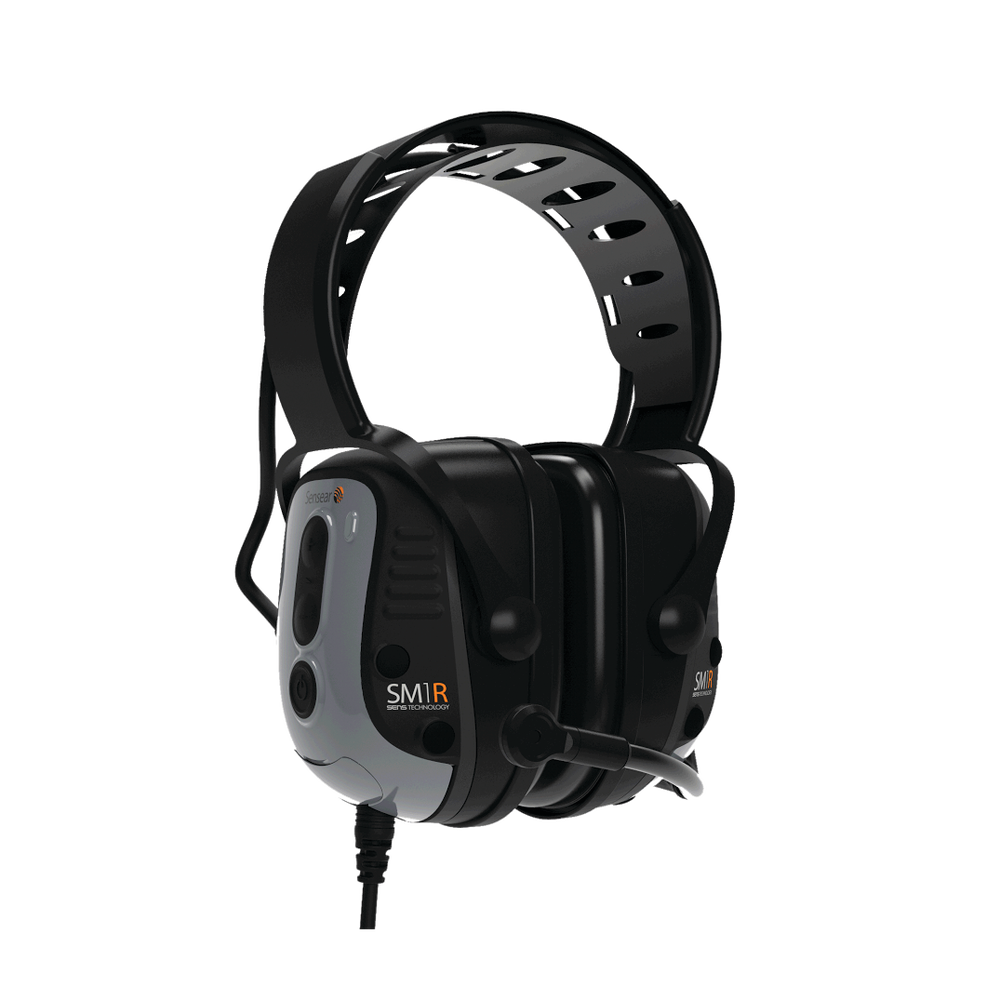SENSEAR
IS Hard-Head Over-the-Head Hearing Protector with Integrated Cable for MOTOROLA MOTOTRBO™ SLIM, MOTOROLA TETRA
IS Hard-Head Over-the-Head Hearing Protector with Integrated Cable for MOTOROLA MOTOTRBO™ SLIM, MOTOROLA TETRA
Couldn't load pickup availability
IS Hard-Head Over-the-Head Hearing Protector with Integrated Cable for MOTOROLA MOTOTRBO™ SLIM, MOTOROLA TETRA
IS Hard-Head Over-the-Head Hearing Protector with Integrated Cable for:
MOTOROLA MOTOTRBO™ SLIM DP2400, DP2600, XPR3300, MOTOROLA TETRA :MTP3100, MTP3250.
Hearing protection for communication in high-noise environments.
Protection is often a requirement in many critical work areas where exposures may exceed 85 decibels (dBA), Sensear has integrated our SENS communication capabilities into a hearing protection headset so users can communicate effectively without removing their hearing protection in these extremely high noise conditions.
This meets the market need for a high-performance headset for extreme noise environments.
Users will benefit from communication capabilities and security features such as:
· Integration of existing two-way radios.
· Inner ear volume limit.
· 360° situational awareness.
Other features and benefits:
· Limit exposure to 'inner ear' noise to 82 dB
· Strong and lightweight design
· Up to 31dB NRR (noise reduction ratio)
·
SENSEAR hearing protectors are the only ones capable of communicating through them.
- Flexible boom microphone with noise cancellation.
- They include 2 earphones on each side to use SENS ® (Speech Enhancement Noise Suppression) technology to enhance your voice and suppress ambient noise, to talk face to face, and to be alert (360° of what is happening around you) in a highly noisy and dangerous environment .
- Cable entry to communicate through two-way radios.
What is hearing loss and what solution does SYSCOM offer to prevent it?
According to OSHA (Occupational Safety & Health Administration), approximately 30 million people are exposed to noise each year at work, and it has been a major concern in the U.S. for nearly three decades. In fact, there are some fairly high-noise environments where workers are exposed to dangerous levels of noise.
While we're typically used to thinking of mining, power plants, and heavy vehicles as key environments, there are other jobs that can damage hearing as well. For example, if you operate a lawnmower, work in a nightclub, work on the ground at an airport, or even as a shooting ranger, you're exposing your ears to noise as high as 107 dB and as high as 140 dB.
Since hearing loss occurs at around 85 dB, workplace hearing loss has proven to be the employer's responsibility. It's important to understand how it happens, the impact it has on workers, their outcomes, and what you can do about it.
There are several factors that impact hearing loss, and it's important to understand the differences, especially when it comes to workers' compensation claims.
There are two main types of hearing loss:
1.- Conductive loss and sensory hearing loss
According to ASHA (American Speech-Language Hearing Association), conductive hearing loss "occurs when sound is not efficiently conducted through the external ear canal to the eardrum and the ossicles of the middle ear." This type of hearing loss is not caused by noisy work environments, usually does not occur on the job, and can sometimes be medically corrected.
2.-Loss of sensorineural hearing (included in the heading of sensorineural hearing loss),
It can occur when the hair cells in the ear responsible for detecting hearing are damaged. This can happen in a noisy environment and lead to a workers' compensation claim.
Basically, noise-induced hearing loss can occur in two modes: permanent threshold shift (PTS) and temporary threshold shift (TTS).
PTS is a long-term, permanent change (reduction) in hearing as a result of continued exposure to noise (such as in a noisy workplace).
TTS occurs when an individual experiences a "short burst" of noise (such as a gunshot). PTS is permanent, whereas someone who suffers TTS may recover after a short period of time.
When dealing with a situation where PTS has occurred in the workplace, it is also important to determine whether the hearing loss is monaural or binaural.
Monaural (also known as unilateral hearing loss (UHL) or single-sided deafness (SSD)), occurs when the worker has lost hearing on only one side.
Binaural hearing loss refers to hearing loss in both ears. It's important to keep in mind that the result can affect the worker's quality of life.
What is the impact of hearing loss on employees?
Hearing loss resulting from loud noise in the workplace is typically permanent and can have the following impacts on employees:
Physical stress
Psychological stress
Impairs the ability to communicate
It directly impacts Security
Hearing loss can affect how a person interacts with others. Whether it's communicating at work, interacting with friends or family, or enjoying a favorite activity, hearing loss can cause stress, frustration, and isolation among those affected.
Staffing isn't the only aspect you should be concerned about. Employees who experience hearing loss at work can directly impact your bottom line.
How does this affect your background?
If you self-insure a portion of your workers' compensation, a reduction in hearing loss claims can directly impact your bottom line. According to AMAXX, hearing loss claims can be the most difficult to prove/disprove due to the many variables involved. A more complex claim or a longer case resolution can result in dramatically higher costs.
For example, according to BusinessInsurance.com, the average claim costs $287 to close in 30 days. That cost nearly triples when the claim is open 31 to 90 days. When a claim takes between one and two years, the cost skyrockets to $19,888. These numbers add up for insurance providers and, in turn, employers.
Part of the reason for the delays can be attributed to tracking down historical medical records. An employee's specific medical history—an audiogram, which shows the results of hearing tests over the employee's lifetime—can be difficult to locate, especially in an aging population. Delays here can cost thousands of dollars, impacting workers' compensation insurance costs.
Can this be avoided?
Here are three things you can do to help eliminate the risk of hearing loss for your employees and reduce workplace complaints and insurance costs.
1.-Have a hearing safety protection program that covers local, regional, state and federal noise assessments and appropriate HPDs (hearing protection devices) for the noise level in your workplace.
2. Monitor your environment. According to OSHA, "employees must be placed in a hearing conservation program if they are exposed to average noise levels of 85 dB or more during an 8-hour workday." There are several monitoring meters available to measure noise levels, from robust sound tools to iPhone apps. Keeping a constant eye (and ear) on noise levels can help you know if (and when) noise levels are too high.
3. Update hearing equipment. There have been several recent advancements in hearing safety devices, including Bluetooth® safety earmuffs, intrinsically safe headsets, and various communication kits that support situational awareness that can protect workers' hearing while equipping them with the tools they need to stay safe and communicate.
Noise-related hearing loss is preventable, and its financial impact on your bottom line through workers' compensation costs is real.
By creating a hearing protection program, monitoring your environment, and having the most up-to-date hearing safety devices, you can minimize your exposure and reduce costs.
Ask your sales representative about SYSCOM's new SENSEAR line, so you can take advantage of this solution to stay connected and protected in high-noise environments.

Share
Out of stock
MODELO: SMR1-ISB1-M11
View full details

